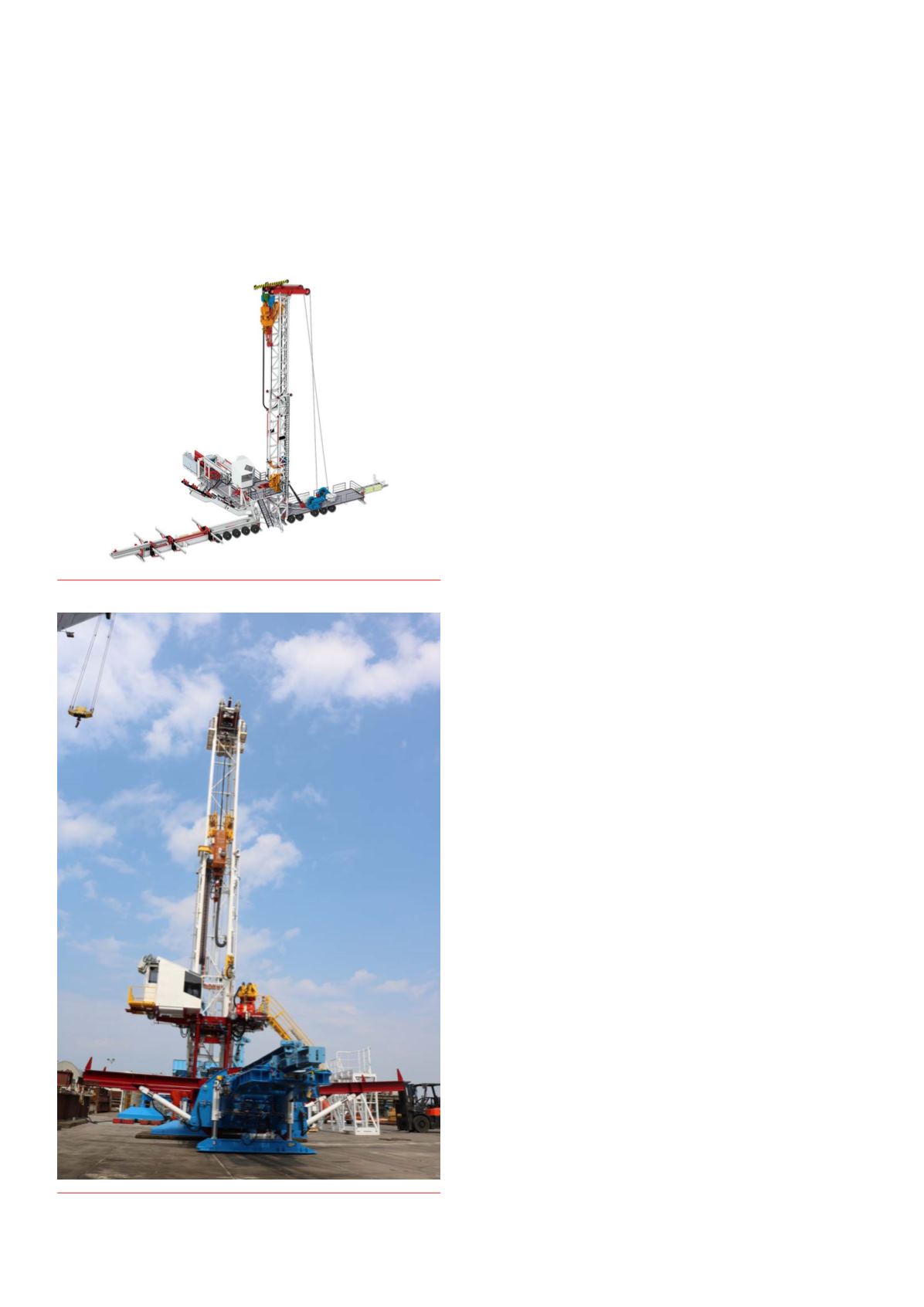
32 |
Oilfield Technology
May/June 2020
A mobile Huisman HM100 rig with fully automated handling
processes is scheduled to enter the oilfield from mid-2020. During
the technology’s development, discussions between operators and
contractors took place to determine where manual handling could
be minimised or even removed altogether, in order to improve
safety levels on the rig.
To understand where significant amounts of manual handling
is required during traditional drilling processes, the current
process has been evaluated on rigs in the 75 – 200 t class by various
contractors and rig crews, starting at ground level and following the
tubular from the pipe racks into the well.
An objective view of current rigs indicates that the traditional
set-up often consists of people working at heights on a vertical
setback. It is necessary to work with machinery such as elevators,
tugger lines and the moving block in order to handle pipe. At the
same time, one or two people on the floor guide the pipe between
storage and the well centre. It is this common interaction between
people and machinery during routine operations that creates
potential safety hazards in the working environment. Introducing
fully automated processes into routine operations can mitigate
these risks.
For the rig class that has been evaluated it is important to
determine if a traditional set-up, with a vertical setback for pipe
storage, is actually required. The most frequent reason for doing
so is the need for fast, efficient operations by running two or three
pipes at once and requiring fewer connections. In the case of
deeper deviated wells, it makes sense to reduce these connections
to a minimum, but it has been observed that the impact on wells
between approximately 8000 ft to 10 000 ft measured depth (MD)
is limited.
As a result of these evaluations, it was decided to develop a rig
that could meet the speeds and efficiency levels of a double rig but
did not require personnel to work at heights.
The control system developed by the company enables the
running of more tubulars per hour, matching or even exceeding
the efficiency levels of a double rig. To enable operations such as
tripping of pipe to take place at high speed, various simultaneous
actions are required. For a human operator, feeding a new pipe to
the rig handler and moving up to the floor – while at the same time
the blocks are moving and the elevator is being operated – would be
hard to perform in a safe manner. However, with a fully automated
tripping process in combination with a zone management system,
these operations are performed in a smooth and consistent way.
The driller can oversee operations from a cabin, but does not need
to control each individual piece of equipment. For non-routine
operations, the driller can operate equipment from the cabin, while
the zone management system stays active.
Pipetrippingandhandling
With the pre-requisites for safe and fast tubular handling having
been determined, it was decided to deliver a rig package with
fully automated pipe tripping and pipe handling during drilling
operations.
This process begins with pipe being delivered to the pipe
racks. In the case of catwalk machines, the pipe is rolled from the
racks towards a machine that pushes the pipe to the rig floor. It
is common in this situation for pipe to not roll correctly towards
the pipe pusher, which therefore requires the crew to manually
re-position the pipe or push it from the racks. To mitigate the risk
in this operation, the pipe is guided by a system from the racks
all the way to the pipe bed, giving the tubular next to no chance
to roll into an incorrect position. Instead of pushing the pipe, the
pipe is grabbed by a pipe handler and brought directly to the well
centre. During the process, the pipe thread is kept away from
any machinery, removing the need for manual guiding of pipe
to the well centre. In addition, the measuring of pipe lengths by
a measuring tape or manual laser unit operated by a crew of at
least two people, while walking around the pipe racks, is no longer
required. Pipe is instead automatically measured on the pipe
handler and stored in the auto tally system.
Where previously two personnel were required to use a chain on
the rig floor to guide pipe from a catwalk machine towards the well
centre, an automated stabbing arm guide takes over this function
Figure 1.
HM100 trailerised rigdesign.
Figure 2.
HM100 trailerised rigdesign.








